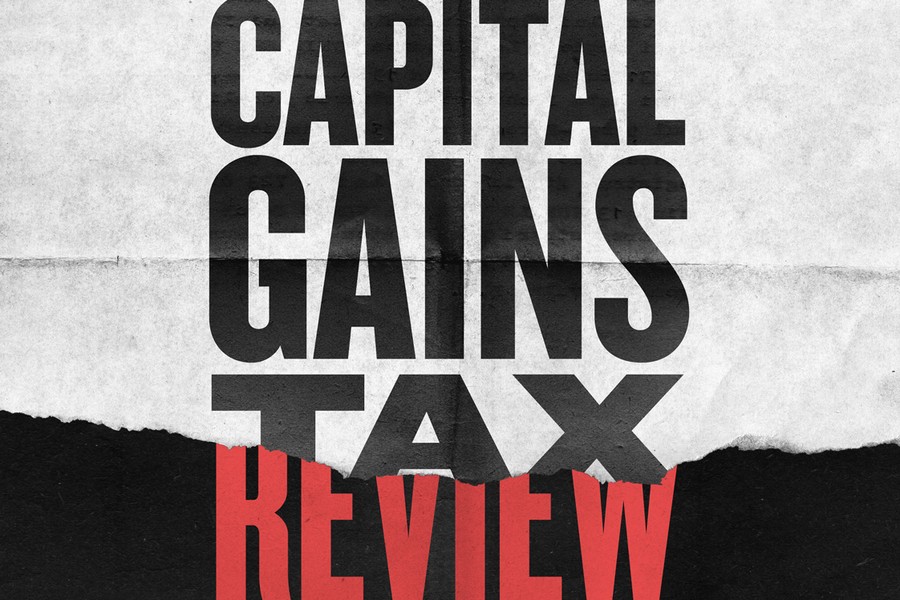First and foremost it is worth noting that there are various reliefs and exemptions available for CGT so, if you are uncertain whether the disposal of a certain asset will give rise to a CGT liability it is recommended that you speak to a tax specialist about your scenario. Typical assets impacted by CGT are second homes, rental property and investments (unless held in an ISA or pension).
In the 2018/19 tax year CGT raised a record £9.5bn (a 6% rise from the previous tax year) in tax receipts.
CGT currently stands at 10% (18% for residential property) for basic rate taxpayers and 20% (28% for residential property) for higher or additional rate taxpayers. However, there are a variety of reliefs and exemptions based on the nature of the scenario, most notably each individual is entitled to a CGT allowance of £12,300 in the 2020/21 tax year within which no tax is due.
CGT has recently been brought into focus as the Chancellor has ordered that the tax be reviewed by the Office of Tax Simplification (OTS). The intent of the review is to identify opportunities relating to administrative and technical issues as well as areas where the present rules can distort behaviour and do not meet their policy intent. It is certainly clear that CGT could benefit from some simplification however, many see this review as more of an opportunity to help bolster the government’s coffers following the recent spending associated with the global pandemic.
Not surprisingly, those most impacted by the potential changes to CGT are the wealthy. In the 2018/19 tax year CGT raised a record £9.5bn in tax receipts with just 1% of taxpayers accounting for 40% of the tax take. Additionally, higher rate income tax payers are twice as likely to incur CGT as all taxpayers generally.
Of course the implications of this review will depend on the nature of any prospective changes. Rishi Sunak stated in his letter that he would be interested in any proposals on the regime of allowances, exemptions, reliefs and treatment of losses within CGT, and the interactions of how gains are taxed compared to other types of income.
Based on Rishi’s statement, one of the potential changes that may occur is the aligning of CGT rates with those of income tax. This has previously been proposed by Labour and would of course have larger implications for higher and additional rate tax payers as standard CGT rates would increase by 10% (from 10% to 20%) for basic rate tax payers but, 20% to 25% (from 20% to 40% or 45%) for higher and additional rate tax payers respectively. This measure may be of particular interest to raise funds as, of the £62.8bn of total gains made by individuals in the 2018/19 tax year the £9.5bn tax take represents an average tax rate of only 15%.
Private residence relief is the current exemption from CGT on all or part of an individual’s main home.
Another area that could be changed is the allowances, reliefs and exemptions currently applicable to CGT. This could vary from a reduction or removal of the existing £12,300 CGT allowance to a changing of the main residence relief. The Labour manifesto previously targeted the CGT allowance and proposed to reduce this to £1,000 at the last election. Most of those who realise gains are shielded from a tax liability by the CGT allowance and so any change would likely see a large increase in the amount of tax receipts received. Private residence relief is the current exemption from CGT on all or part of an individual’s main home. This is currently a generous exemption and would generate a significant amount of revenue if removed although, this route does seem counterintuitive to the government’s intent to keep the property market moving. There are a number of other exemptions that exist that would be somewhat easier to target such as those on gambling winnings, wine, cars and the exemption at death rule that removes capital gains from assets on death of the owner which, although they may incur inheritance tax, may also wrongly incentivise individuals to hold assets for life rather than gift throughout their lifetime.
It is very easy to see how simplification of CGT would be beneficial as some elements of the legislation surrounding it are unnecessarily complex.
Similar to the exemption at death rule is what is referred to as the uplift. This is where someone inheriting an asset is assumed to have acquired it as at the date of death rather than the initial acquisition cost. The OTS already mentioned this in their review of inheritance tax so are likely to flag this up again. The issue attached to the current rule is that an individual can sell a recently acquired asset and incur no CGT liability, this is particularly problematic where this overlaps with exemptions on the asset from inheritance tax. This again encourages individuals to hold assets until death rather than encourage passing on assets within their lifetime.
It is very easy to see how simplification of CGT would be beneficial as some elements of the legislation surrounding it are unnecessarily complex. Additionally, the incentives surrounding the tax seem poorly balanced with increased CGT on second homes negatively impacting the likelihood of an individual putting that property on the market for the benefit of first time buyers. In addition, the gift of a property or invested assets from a parent to help their child on the ladder faces CGT and a potential inheritance tax liability if the parent passes away within the 7 year gifting period however, if they wait to pass the assets until death they only have inheritance tax to worry about.
In some respects, it would be helpful to see a restructuring of CGT that acknowledges the risk involved in investing within certain assets and adequately incentivises this, as well as allowing wealth to be passed through the generations, particularly given the nature of the economic situations impact on younger generations. Investors should not feel trapped in investments where the simplest solution is to die with the asset and have the gains wiped out.
There are plenty of solutions available to simplify CGT such as a single flat rate, clear strategy on exemptions or doing away with the tax altogether.
There are plenty of solutions available to simplify CGT such as a single flat rate, clear strategy on exemptions or doing away with the tax altogether. It should be noted that the OTS was previously called upon by Rishi’s predecessor, Phillip Hammond, to conduct a review into inheritance tax and we are yet to see any real overhaul to this tax despite the findings of the reports. Naturally, some measures for change will be able to bring in a larger amount of tax receipts than others and now is a time where this is of increased importance but, I do hope that positive changes are made and with the genuine intent to update this somewhat outmoded tax and the incentives it creates, rather than seeking solely to improve the Treasury's balance sheet.
The information provided in this article is of a general nature. It is not a substitute for specific advice with regard to your own circumstances and it may be prudent to consult a tax adviser.
Illustration by Adam Mallett




